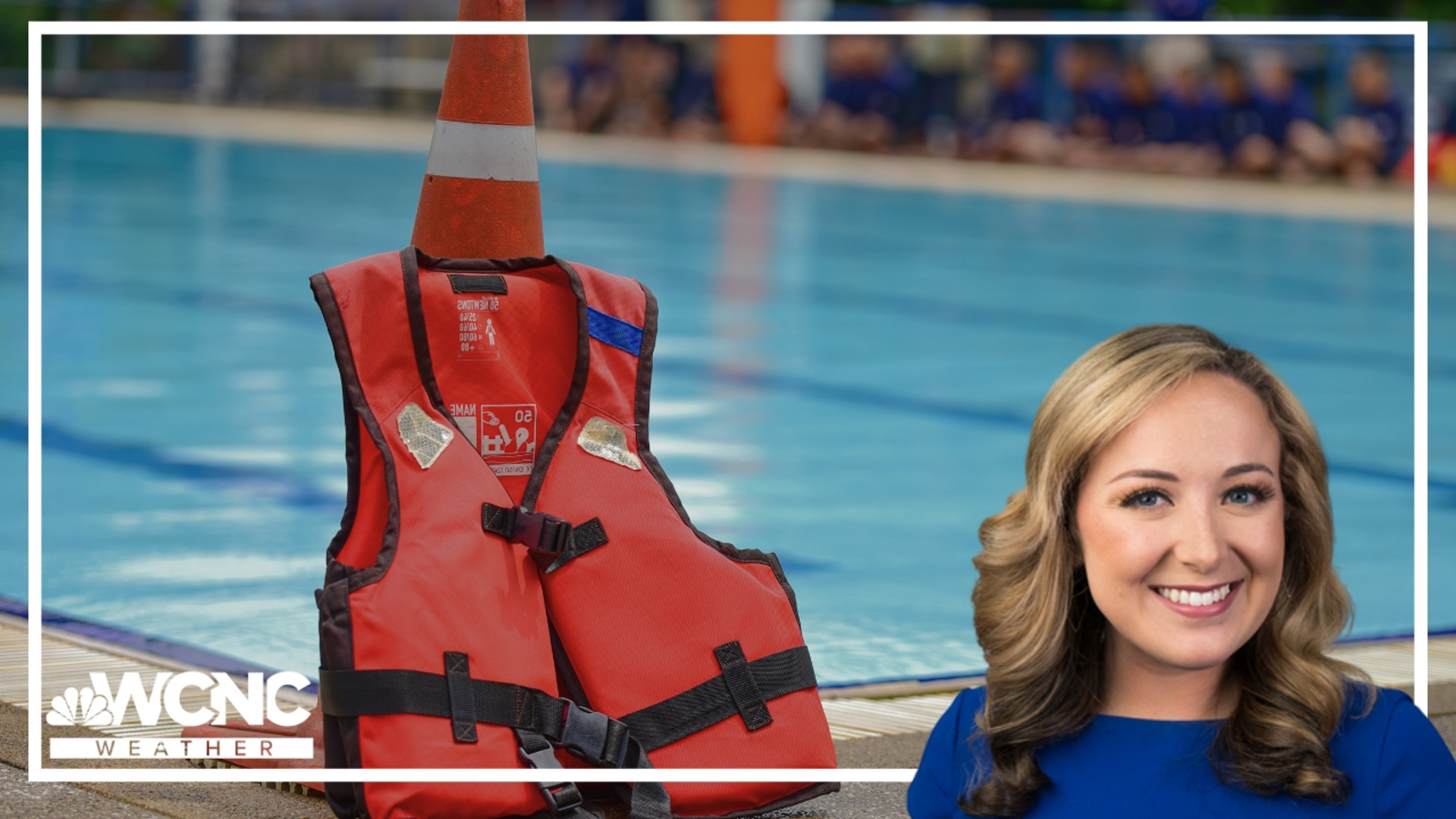CHARLOTTE, N.C. — Fresh fruit, especially citrus, seemingly goes hand-in-hand during the summertime. But oranges can also help us understand the science of buoyancy and density. They can help us explain to children how life jackets work and how incredibly important they are!
What you’ll need:
- Oranges (unpeeled)
- Water
- Clear container (pitcher/jar/vase - as long as you can see through it)
This is a good opportunity to have your kids review the scientific method and make a hypothesis. Do they think an orange will sink in the water or float?
Step 1) Pour water into your clear container. For this experiment at WCNC Charlotte, we decided to use a clear vase Brittany already had at home.
Step 2) Gently drop one unpeeled orange in the vase. Observe what happens.
Notice the unpeeled orange floats at the top!
Step 3) Take the orange out of the container and peel it. Then, gently place it back inside. What happens now?
Notice the peeled orange falls to the bottom.
Why does the peeled orange fall to the bottom when the unpeeled floats? Didn’t we just remove the extra mass of the peel?
For the latest weather alerts, download the WCNC Charlotte mobile app and enable push notifications.
What’s the science?
Although we removed mass by peeling the orange, we also removed the thick and porous skin. The skin of the orange has tiny pockets of air, which gives the unpeeled orange buoyancy (or the ability to float). It may be tough on the outside, but it’s spongy and filled with air on the inside.
This acts as a ‘life jacket’ by helping the orange be less dense than water. When someone wears a life jacket made of foam, it also contains tiny air pockets. This gives people the same ability to displace water while becoming less dense and they easily float. This is known as Archimedes’ Principle, which says the buoyant forces exerted on a fluid are equal to the weight of the fluid displaced.
Density also plays a part in how we float. This refers to how closely atoms are packed together. The skin of the orange is lightweight with loosely packed atoms, just like an air-filled life jacket. However, a peeled orange doesn’t have that outside layer so it’s tightly packed inside and immediately plummets to the bottom of the water.
Another example of this is to think of swimming in a pool. If I curl up in a ball and go underwater, I'll quickly sink to the bottom. However, if I lay flat on my back and extend my limbs, I'll displace less water and my ‘atoms’ are less tightly packed. When this happens, I'll quickly rise back to the top!
Contact Brittany Van Voorhees at bvanvoorhe@wcnc.com and follow her on Facebook, X and Instagram.
WCNC Charlotte’s Weather IQ YouTube channel gives detailed explainers from the WCNC Charlotte weather meteorologists to help you learn and understand weather, climate and science. Watch previous stories where you can raise your Weather IQ in the YouTube playlist below and subscribe to get updated when new videos are uploaded.

